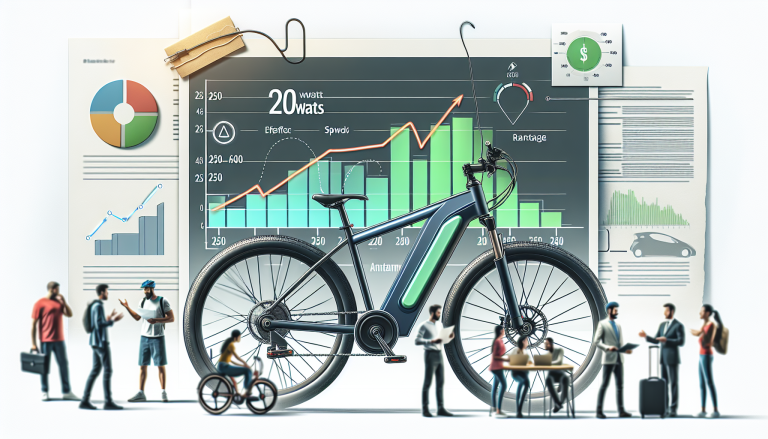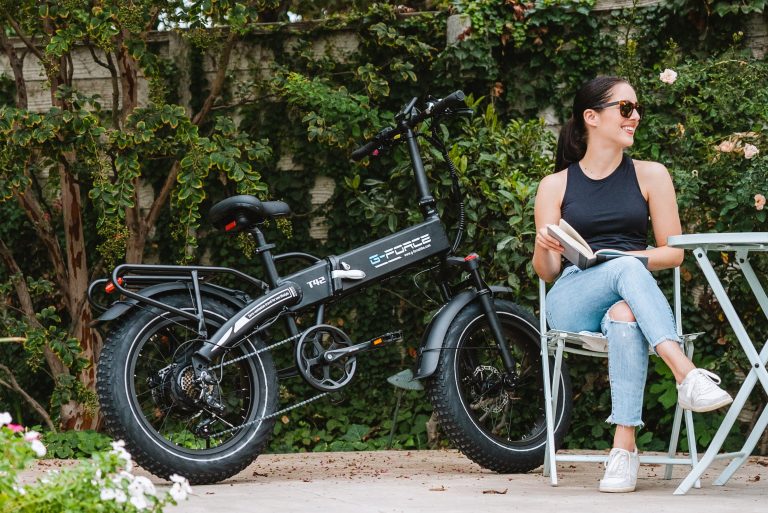What Is The Life Expectancy Of The Ebike Battery?
Are you curious about how long an ebike battery can last? If so, you’ve come to the right place. In this article, we will explore the fascinating world of ebike batteries and uncover their life expectancy. Whether you’re an avid ebike rider or considering purchasing one, understanding the lifespan of the battery is crucial for your long-term enjoyment and investment. Get ready to learn everything you need to know about the life expectancy of the ebike battery. Let’s dive in!
Factors Affecting Battery Life Expectancy
When it comes to electric bike (e-bike) batteries, several factors can influence their life expectancy. Understanding these factors is essential for maximizing the lifespan of your battery, ensuring optimal performance, and avoiding unnecessary replacements. In this article, we will explore the main factors that can affect the battery life expectancy of e-bikes and provide tips on how to increase the lifespan of your battery.
Battery Chemistry
E-bike batteries come in different chemistries, each with its own set of characteristics and performance. The most common types of e-bike batteries are Lithium-ion (Li-ion), Nickel-Cadmium (NiCd), and Nickel-Metal Hydride (NiMH) batteries. Understanding the differences between these chemistries is crucial in determining the lifespan of your battery.
Lithium-ion (Li-ion) Batteries
Lithium-ion batteries are widely used in e-bikes due to their high energy density and long cycle life. These batteries can provide a significant range and have a relatively long lifespan compared to other chemistries. On average, Li-ion batteries have a life expectancy of 2-7 years, depending on various factors such as usage patterns, charging habits, and operating temperature.
Nickel-Cadmium (NiCd) Batteries
While not as commonly used as Li-ion batteries, Nickel-Cadmium batteries were widely popular in older e-bike models. These batteries have a high tolerance for extreme temperatures and can withstand numerous charging cycles. However, they suffer from the “memory effect,” meaning they gradually lose their maximum capacity if not fully discharged before recharging. The average life expectancy of NiCd batteries is around 2-5 years.
Nickel-Metal Hydride (NiMH) Batteries
NiMH batteries are a popular choice for e-bikes due to their lower cost compared to Li-ion batteries. They offer a good balance between energy density and cycle life, making them suitable for various e-bike applications. NiMH batteries typically have a life expectancy of 2-5 years, depending on factors such as usage patterns and charging habits.

Usage Patterns
Your riding habits and usage patterns play a significant role in determining the life expectancy of your e-bike battery. Several factors within this category can influence battery lifespan.
Distance Traveled Per Charge
The distance you travel on a single charge, commonly known as range, can impact the life expectancy of your battery. If you consistently push your battery to its limit and drain it completely before recharging, it can shorten the overall lifespan. On the other hand, if you frequently charge your battery before it is fully discharged, known as shallow cycling, it can also reduce the battery’s capacity over time. Striking a balance between the two by avoiding extreme ends can help prolong battery life.
Riding Conditions
The conditions in which you ride your e-bike can significantly impact battery life expectancy. Riding on rough terrains, uphill climbs, or constantly accelerating and decelerating can put a strain on the battery, leading to quicker depletion. Similarly, if you frequently ride at high speeds or use the higher power modes on your e-bike, it can result in increased power draw from the battery, reducing its overall lifespan. Being mindful of these factors and adjusting your riding style accordingly can help extend battery life.
Speed and Power Modes
Different e-bike models offer various speed and power modes, allowing you to choose between higher speeds and more power or conserving energy for longer rides. Opting for higher speeds and using the more power-intensive modes can drain the battery faster. While these modes can be convenient in certain situations, using them sparingly can help preserve battery life in the long run.
Temperature
Temperature is another crucial factor that can significantly impact battery life expectancy. Both high and low temperatures can have adverse effects on e-bike batteries, so it is important to be mindful of the operating temperature range specified by the manufacturer.
Impact of High Temperatures
Exposing e-bike batteries to high temperatures can accelerate their degradation process. Prolonged exposure to heat can cause internal chemical reactions that degrade the battery’s performance and reduce its overall lifespan. It is important to avoid leaving your e-bike under direct sunlight or storing it in hot environments for extended periods. Parking your bike in shaded areas or using a bike cover can help protect the battery from excessive heat.
Impact of Low Temperatures
Extreme cold temperatures can also have a negative impact on e-bike batteries. Cold weather can reduce the battery’s capacity and increase internal resistance, resulting in decreased performance. Riding in freezing temperatures or leaving your e-bike outdoors in cold conditions for prolonged periods can shorten the battery’s life expectancy. Keeping your e-bike in a sheltered environment or using insulation wraps during winter months can help mitigate the effects of low temperatures.
Operating Temperature Range
Manufacturers specify an operating temperature range for e-bike batteries, typically between -20°C and 60°C (-4°F and 140°F). It is important to operate your e-bike within this range to ensure optimal battery performance and longevity. Extreme temperatures outside this range can cause irreversible damage to the battery cells, leading to reduced capacity and overall lifespan.

Charging Habits
How you charge your e-bike battery can significantly affect its life expectancy. Adopting proper charging habits is essential for maximizing battery performance and lifespan.
Regular Charging vs. Deep Discharging
Contrary to popular belief, deep discharging (completely draining the battery) and regular charging cycles can both have negative effects on battery lifespan. Deep discharging can increase the stress on the battery cells, leading to premature degradation. Similarly, frequent shallow discharging (only partially using the battery’s capacity) and charging can also negatively impact the battery. Striking a balance by avoiding extreme ends and charging your battery when it reaches around 20-30% capacity can help extend its lifespan.
Charging Cycles
The number of charging cycles your e-bike battery goes through can also impact its life expectancy. A charging cycle refers to the process of consuming the battery’s full capacity and recharging it back to full. Li-ion batteries, for example, typically have a cycle life of 500-1000 cycles. The more charging cycles your battery goes through, the more it will gradually lose its capacity. Being mindful of your charging cycles and prolonging the intervals between them can help increase the overall lifespan of your battery.
Overcharging and Undercharging
Overcharging can cause irreversible damage to e-bike batteries, leading to reduced capacity and shorter overall lifespan. It is crucial to avoid leaving your battery connected to the charger for extended periods once it reaches full capacity. Similarly, undercharging your battery by not reaching its full capacity before disconnecting it from the charger can also impact its life expectancy. Following the manufacturer’s charging instructions and disconnecting the charger once the battery is fully charged is essential for prolonging battery life.
Storage and Maintenance
If you plan to store your e-bike for an extended period without using it, it is important to follow proper storage and maintenance procedures for the battery. Partially charge the battery (around 50%) before storing it in a cool and dry place. Regularly check the battery’s charge level during storage and, if needed, recharge it to maintain optimal health. Additionally, following any maintenance guidelines provided by the manufacturer, such as cleaning battery contacts and ensuring proper fitting, can help prolong battery life.
Quality of Battery
The quality of the battery itself, including the brand, manufacturer, and overall construction, can also affect its life expectancy. Investing in a high-quality battery from a reputable brand and manufacturer can ensure better performance and longevity. Poorly constructed batteries with subpar components may degrade faster and have a shorter overall lifespan. Additionally, looking for batteries with good warranty and replacement options can provide peace of mind and ensure proper support in case of any issues.

Average Life Expectancy
The average life expectancy of e-bike batteries can vary depending on several factors, including the battery chemistry and usage patterns. Here is a general overview of the average life expectancy of different battery chemistries:
Li-ion Batteries
Li-ion batteries typically have a life expectancy of 2-7 years, depending on factors such as usage, charging habits, and operating temperatures. Proper care and adherence to best practices can help maximize the lifespan of Li-ion batteries.
NiCd Batteries
NiCd batteries, while less commonly used in modern e-bikes, have an average life expectancy of around 2-5 years. The memory effect associated with NiCd batteries and their sensitivity to overcharging can impact their overall lifespan.
NiMH Batteries
NiMH batteries offer a good balance between cost and performance and have an average life expectancy of 2-5 years. Proper charging habits and maintenance can help extend the lifespan of NiMH batteries.
Increasing Battery Life
If you want to maximize the lifespan of your e-bike battery and ensure optimal performance throughout its life, here are some tips to consider:
Proper Charging Practices
Follow the manufacturer’s charging instructions and avoid overcharging or undercharging your battery. Aim for partial charging cycles around 20-30% capacity and moderate charging intervals to minimize stress on the battery cells.
Avoiding Extreme Temperatures
Operate your e-bike within the recommended temperature range specified by the manufacturer. Avoid exposing the battery to extreme heat or cold for extended periods and take measures to protect the battery from temperature fluctuations.
Optimizing Riding Habits
Be mindful of your riding conditions, speed, and power modes. Avoid rough terrains, excessive acceleration and deceleration, and constantly using high-speed or power-intensive modes. Strive for a balance that conserves energy without compromising on your riding experience.
Battery Maintenance and Care
Follow proper storage and maintenance procedures provided by the manufacturer, especially if you plan to store your e-bike for an extended period. Regularly clean battery contacts, ensure proper fitting, and monitor the battery’s charge level during storage.
Battery Replacement Options
If your battery’s performance significantly declines or its capacity diminishes over time, consider replacing it with a new one. Look for reputable brands and manufacturers that offer good warranty and replacement options to ensure long-term satisfaction and support.
Impact of Battery Life Expectancy on E-bike Performance
Understanding the impact of battery life expectancy on e-bike performance can help you gauge the importance of battery maintenance and care. Here are a few ways in which a declining battery can affect your e-bike’s performance:
Reduced Range
As the battery ages and its capacity diminishes, the overall range of your e-bike will decrease. You will need to recharge your battery more frequently to cover the same distance, limiting your riding capabilities.
Decreased Power Output
An aging battery may not be able to deliver the same power output as a new battery. This can result in decreased acceleration, reduced assistance levels, and overall slower performance.
Increased Charging Frequency
As the battery’s capacity declines, you will need to recharge it more frequently. This can be a hassle, especially if you rely on your e-bike for daily commuting or long rides.
Cost of Battery Replacement
If your battery’s capacity significantly diminishes, or it fails to perform optimally, you may need to consider replacing it. The cost of battery replacement can vary depending on the brand, model, and capacity of the battery, so it is something to keep in mind when budgeting for your e-bike.
Conclusion
The life expectancy of an e-bike battery can be influenced by several factors, including battery chemistry, usage patterns, temperature, charging habits, and the overall quality of the battery. By understanding these factors and adopting proper care and maintenance practices, you can maximize the lifespan of your battery, ensure optimal performance, and avoid unnecessary replacements. Remember to follow the manufacturer’s guidelines, be mindful of your riding habits, and invest in high-quality batteries to enjoy your e-bike to the fullest for years to come.







